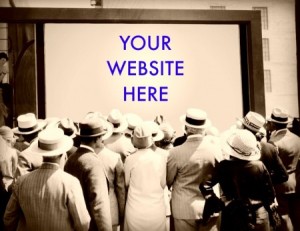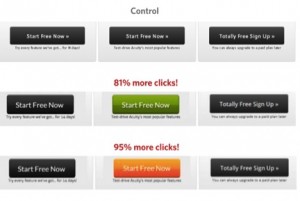
Websites are no longer just for lead generation – they’re a critical tool in the recruitment process.
By 2020, millennials as a demographic will make up about half of the workforce population. If you’re in the process of hiring new employees right now, you’re most likely interviewing millennials and you’ll need to consider how to attract & engage this tech-savvy generation.
Even if other sources of marketing are more fruitful for your business, upgrading your site with an eye towards attracting the most talented and enthusiastic employees can go a long way in boosting the overall growth of your business.
Create a Website That Attracts Millennial Hires
1. Modern, High-Quality Web Design
Millennials tend to be ahead of the curve and much more comfortable with technology compared to Generation Xers and baby boomers. According to an analysis of Pew Center Research, millennials lead on the adoption of the latest technology for smartphones and social media compared to other generations.
If your website looks like it was built in your founding year of 1990, then you could be conveying the wrong message to both potential clients and employees. Consider investing in a website redesign in order to upgrade to a high-quality, modern design.
Modernizing your site includes creating a mobile-friendly experience. This is an especially important feature for millennials, who rank amongst the top smartphone users (not surprising, as 98% of all millennials own a phone.) Given this, you need to implement a mobile-wise design approach. This means considering how all aspects of the site look on mobile devices from the navigation to the content to the spacing.
2. Convey Your Work Culture
Millennials, as a generation, are known for being less motivated by money and more motivated by looking for purpose in their work. Taking this into account creates new challenges – or opportunities – in hiring and retaining employees from the millennial age group.
Beyond looking for meaningful employment, young professionals are also drawn to companies with a cool culture, flexibility, and engaging work. All of this can be communicated with your website, which creates the first or second impression of your business to prospective employees.
The About page on your website is a great place to portray your company’s culture. Typically the second most visited page after your website home page, the About page tells a story about your business. Share any awards and recognitions and highlight your core values in order to establish trust and credibility for your organization.
Lastly, try to incorporate photos of your team and videos on the About page. Stay away from generic stock photos, as these are easy to spot and can convey an inauthentic workplace.
3. Provide Relevant Info to Prospective Employees
Even if you have a great design, if your site isn’t relevant to what your visitors are looking for, they’ll most likely bounce to another company’s site.
As a first step, categorize all the visitors that may be coming to your website, such as potential clients or employees, partners, existing clients, etc. This step is very important for a B2B website design, since B2B sites typically have a variety of stakeholders involved in decisions. Then, assess their needs and the context of what brings them to the site. Doing this work ahead of time will help you build an intuitive hierarchy on the site. For prospective employees, consider what information they’ll be looking for at the different stages of their process.
Because of the popularity of quick-scanning on social media, web visitors are now tending to scroll and scan content on websites, rather than settling in for an afternoon of reading. Millennials, who are especially used to scanning for content, expect to find what they are looking for particularly quickly.
4. Incorporate Video & Social Media
Millennials are known to be “visually literate,” meaning that they tend to take in information through images, video, and text. Video is one of the best ways to engage this demographic and there are numerous ways to incorporate video into your website.
A video on the About or Career page, perhaps of your office, or of an employee’s testimonial, can convey the work culture in an authentic and accessible way. You can also create video blogs as an alternative form of content, and post them to YouTube to broaden your audience. YouTube has become an entertainment & learning platform for millennials & their succeeding generation: Generation Z. In fact, 55% of millennials say YouTube is their favorite way to learn, according to research by Pearson.
In addition to YouTube, social media platforms like Facebook and Instagram should be an important part of a recruitment strategy. Social media is a prime place to portray your company’s culture. Think of your social media platforms as an extension of the site and share more in depth experiences about what it’s like to work for your business through photos and videos.
5. Use Technology in the Hiring Process
Because of their technical prowess, millennials are more discerning and critical in evaluating a business’ website than the previous generations. With this in mind, avoid the most offensive website problems, such as a slow website speed, 404 errors and annoying pop-ups. Website page speed is also an important factor, and web visitors will abandon a website if it takes too long to load, especially on mobile devices.
Millennials are also more comfortable with using technology during the hiring process – you probably won’t receive a Fax message from millennials anytime soon! Given this, make use of your website as much as possible, from the initial stage of posting job openings to hiring your new employee.
Provide information on the hiring steps and expectations on a Career page or job posting. You can also set up basic forms in order to receive an initial applicant’s resume and basic info. However, be careful to not request any confidential data through web forms, as you would be responsible for that data if any security breaches occur on your site.
Generation Z is Next
Millennials are just the start. Future generations will continue to be increasingly comfortable with smartphones and the latest technology. For millennials and the subsequent generation, Generation Z, you can expect more and more focus to be on the online presence of a company.
Appeal to the tech-savvy, visually-literate millennial generation through your website and you may just find yourself with a more enthusiastic, creative and engaged workforce.
Digital & Social Articles on Business 2 Community
(57)
Report Post






